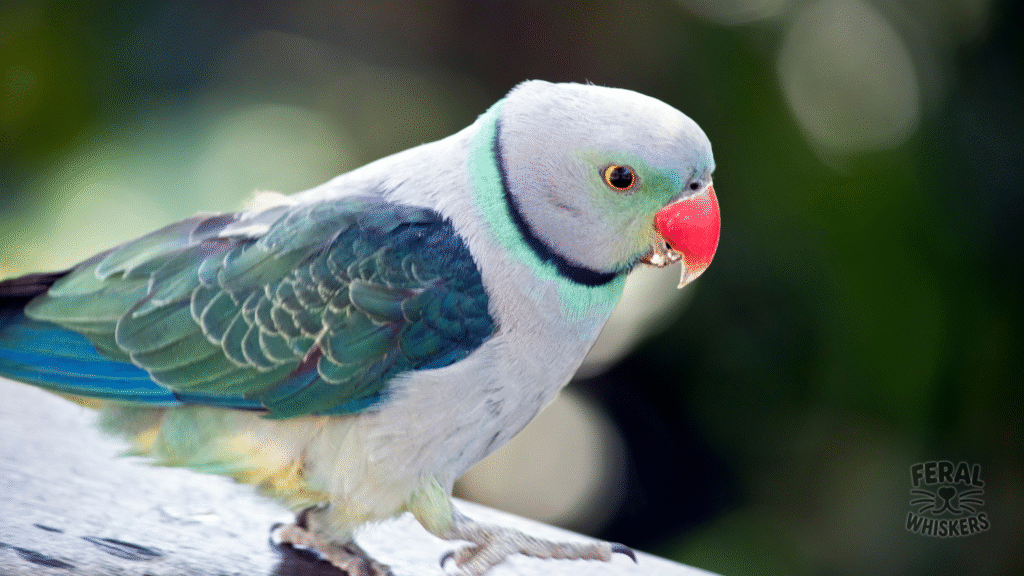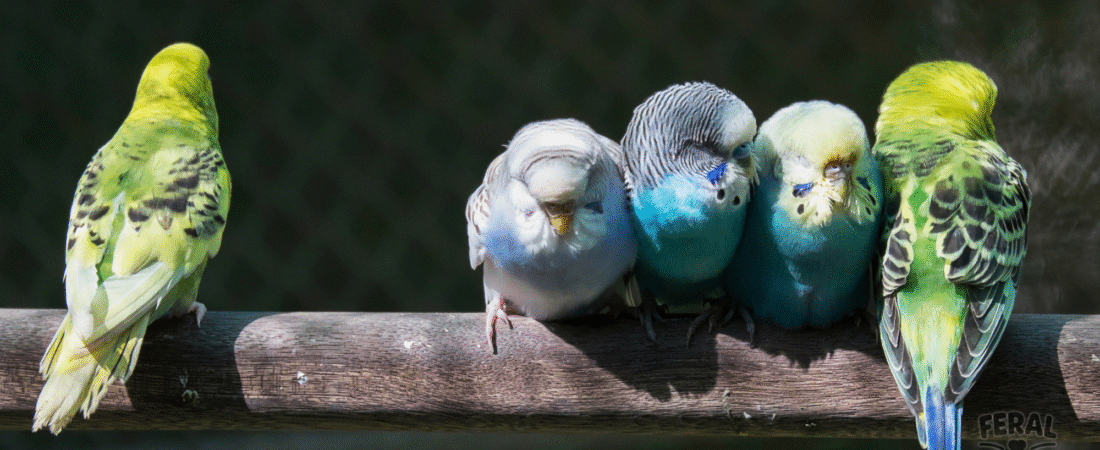
Introduction: Tiny Birds, Enormous Charm
Budgerigars (commonly called budgies or “parakeets”) are one of the most beloved pet birds in the world. Native to Australia, these small parrots are inexpensive, colorful, playful, and surprisingly intelligent.
Despite their small size (just 7–8 inches long), budgies have big personalities — they can form deep bonds with humans, learn tricks, and even mimic speech. They’re often called “the beginner’s parrot”, but make no mistake: budgies are as fascinating and loving as their larger parrot cousins.
1. Personality: Why People Love Budgies
- Playful: Love toys, swings, and puzzles.
- Vocal: Chirpy, chatty, and some individuals become excellent talkers.
- Affectionate: Bond strongly with caretakers.
- Energetic: Active fliers that thrive with exercise and stimulation.
- Social: Do well alone with daily interaction, or in pairs/groups with other budgies.
Fun Fact: The world record for the largest bird vocabulary is held by a male budgie named Puck, who reportedly knew over 1,700 words!
2. Lifespan
With proper care, budgies live:
- 5–10 years on average.
- 15+ years in rare cases with excellent diet and veterinary care.
3. Budgie Diet: Fueling Their Energy
What to Feed
- Pellets (50–60%) – Base diet ensures balanced vitamins/minerals.
- Vegetables (20–25%) – Leafy greens (kale, spinach, bok choy), carrots, broccoli, zucchini.
- Fruits (10%) – Apple (no seeds), melon, berries, banana.
- Seeds (10–15%) – Millet, canary seed; use as training treats, not the main diet.
- Grains & Sprouts – Brown rice, quinoa, cooked oats, sprouted seeds for variety.
Foods to Avoid (Toxic)
- Avocado
- Chocolate
- Coffee/Tea
- Alcohol
- Salty/Fatty foods
- Onions/Garlic
4. Housing & Environment
Cage Setup
- Minimum size: 18”L x 18”W x 18”H for 1–2 budgies, but bigger is always better.
- Bar spacing: ≤ ½ inch (to prevent escapes/injury).
- Cage location: Well‑lit room, away from drafts, smoke, or kitchens.
Enrichment
- Toys: Swings, bells, shreddable paper, mirrors (if kept singly).
- Perches: Natural branches of various sizes to exercise feet.
- Flight time: Budgies thrive with daily out‑of‑cage flying time.
5. Training & Bonding
Budgies may be small, but they love learning.
- Step Up Training: Slowly teach using millet as a reward.
- Talking Ability: Males in particular can learn dozens to hundreds of words with patience.
- Tricks: Teach spins, recall, touching a target stick, or even rolling tiny toy balls.
- Bond Building: Spend time near them daily, talk gently, and hand‑feed treats.
6. Health & Holistic Prevention
Common Health Issues
- Respiratory illness (sneezing, discharge, tail bobbing).
- Obesity from seed‑only diets.
- Scaly face mites (crusty beak/feet).
- Psittacosis (parrot fever) – zoonotic disease, see vet immediately.
Holistic Prevention
- 🌱 Balanced diet = strongest immune defense.
- 🌬 Clean air – no smoke, strong cleaners, Teflon pans.
- 💧 Hygiene – daily water/food dish cleaning, cage maintenance.
- ☀ Natural light or safe UV lamps for vitamin D.
- 🧸 Enrichment – avoid boredom (a stressed budgie = unhealthy budgie).
- 🩺 Regular vet checks – yearly exams catch hidden illness.
7. Signs of a Sick Budgie
🚨 Call a vet immediately if you see:
- Constantly puffed feathers.
- Lethargy or sitting on cage bottom.
- Loss of appetite or dramatic weight changes.
- Discolored/watery droppings.
- Nasal/eye discharge.
- Trouble breathing, wheezing, tail bobbing.
8. Are Budgies Good Pets for Beginners?
YES, if you want:
- An affordable, cheerful bird.
- Manageable care and space needs.
- Interactive personality without overwhelming noise.
NOT ideal, if:
- You expect “low‑maintenance.” They need daily care, attention, and enrichment.
- You want quiet — budgies are talkative, especially in pairs!
9. Fun Facts About Budgies
- Wild budgies in Australia travel in flocks of thousands across the outback.
- Budgies’ colors in the wild are mostly green and yellow, but selective breeding gave us blue, white, violet, and more.
- They can fly at speeds of 30–40 mph.
- Male budgies have a blue cere (nose area), while females’ are usually brown/tan.
10. FAQs
Q1: Should I keep budgies in pairs?
Yes, they’re social. A single budgie can bond strongly with you, but pairs prevent loneliness if you’re busy.
Q2: Can budgies talk?
Yes! Males have a higher chance, although speech is softer than large parrots.
Q3: How often should I clean the cage?
Daily spot cleaning, weekly full cage wash.
Q4: Do budgies bite?
They may nibble during training, but serious bites are rare. Patience reduces fear‑biting.
Q5: Can budgies live with other birds?
They can sometimes share with other small parrots (like cockatiels), but supervision is needed — budgies can be surprisingly bossy!
Q6: Do they need vet checkups?
Yes, an avian vet annually is essential for prevention.
Final Takeaway
Budgies prove that small parrots = big joy. With love, proper nutrition, enrichment, and attention, these feathered friends bring decades of chirps, tricks, and companionship.
Whether you’re new to bird keeping or a seasoned parrot lover, budgies are a perfect example of how rewarding parrot care can be.

